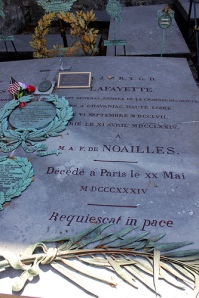Everyone loves Harry Potter and the only thing that people love more than Harry Potter is trying to determine what house they’d be placed in. Remember when Pottermore was released and the site crashed over and over as people clamored to get sorted and the promptly abandoned their accounts? Exactly.
So let’s clamp the sorting hat onto the Founders’ heads and see where they place.
George Washington
Gryffindor
Ah, Mr. Washignton. The big kahuna. Of course he’d be Gryffindor. He led the thousands of his soldiers to defeat the British, the strongest army in the world. He was known for keeping his cool under pressure (or just keeping his cool at any time–the man wasn’t known for his emotions). He was chivalrous, a completely perfect example of a Virginia gentleman. Washington was not nearly as avid a reader as Jefferson but he was far more skilled in horseback riding and dancing. He was a leader, not only to the people of his time, but to the millions of Americans today.
Other Gryffindors: James Monroe, John Adams
Thomas Jefferson
Ravenclaw
Bookish and silent, but with a pompous air, Jefferson is the dictionary example of a Ravenclaw. If drafting the Declarations of the Rights of Man and the Declaration of Independence wasn’t enough of example of his brains, perhaps his innovative inventions of a letter duplicator and the world’s first example of the office “spinny chair” will convince you. Instead of people who complain of the lack of things to make their lives either, Jefferson not only drafted them, but made them himself. His habit of reading and buying books literally helped put him in millions of dollars in debt (by today’s standards) by the end of his life. He was incredibly knowledgeable about other cultures, and is the person who introduced such food as creme brulee, champagne, macaroni and cheese, broccoli, tomatoes, peppers, eggplants, and peanuts to the States.
Other Ravenclaws: Benjamin Franklin, James Madison
Alexander Hamilton
Slytherin
Some may argue that Hamilton belongs in Gryffindor, but the two houses are different sides of the same coin. Hamilton’s drive and cunning nature (hello–slandering Aaron Burr) makes him lean more towards the snake. He was also more self-centered than his Gryffindor counterparts. But Slytherin isn’t all Malfoys and Voldemorts. It’s thanks to Hamilton’s determination that he left Nevis on a scholarship and went onto become a part of history. And of course, along the way were a variety of scandals (like Maria Reynolds) which makes him lean more on the Slytherin side. He was brave, of course, but the combination of his desire for power, brains, and ambition keep him in the green and silver.
Other Slytherins: Sam Adams, Aaron Burr, Edward Rutledge
Marquis de Lafayette
Hufflepuff
Sweet, sweet Lafayette. Never seen a day of battle, and yet ships himself to help fight a war in a country he’s never visited before. Such good intentions and so, so friendly and helpful, the Marquis belongs in Hufflepuff. He was Washington’s personal cheerleader and the picture perfect sidekick. Imagine his little French accent screaming support for freedom. Adorable. But he’s also a perfect example that Hufflepuffs aren’t useless. Mr. French Enthusiasm’s dedication rallied thousands of French troops which helped us actually win the war.
Other Hufflepuffs: Richard Henry Lee, Rev. John Witherspoon




